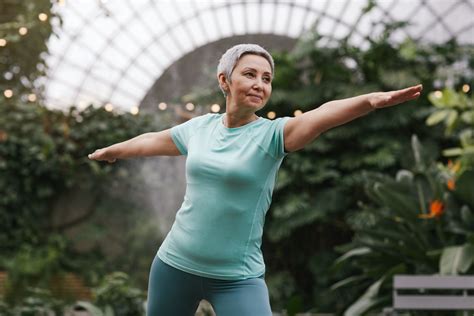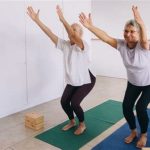Unlocking the Power of Yoga: A Comprehensive Guide to Improving Seniors’ Health
Introduction
As the population ages, maintaining physical, mental, and emotional well-being becomes increasingly essential. For seniors, yoga offers a multifaceted approach to staying active, managing chronic conditions, and improving quality of life. Yoga’s blend of movement, breathwork, mindfulness, and relaxation techniques makes it an accessible and effective option for older adults. This article explores the benefits, challenges, practical applications, and future potential of yoga in enhancing senior health.
Key Concepts
- Asanas: Physical postures that enhance flexibility, strength, and balance.
- Pranayama: Controlled breathing techniques that calm the nervous system.
- Meditation: Mindfulness practices that reduce stress and improve cognitive function.
- Chair Yoga: Adapted postures using a chair for support, ideal for those with mobility issues.
- Restorative Yoga: Gentle postures that promote relaxation and recovery.
- Neuroplasticity: The brain’s ability to reorganize itself through practice, potentially improved by yoga.
Historical Context
Yoga has its roots in ancient India, where it was practiced for spiritual and physical well-being. In the 20th century, yoga gained popularity in the West, evolving into various styles. Initially seen as a fitness trend, research eventually revealed its profound health benefits, especially for managing stress and chronic conditions. By the 21st century, medical professionals began recommending yoga as part of holistic healthcare, particularly for older adults coping with age-related challenges.
Current State Analysis
Recent studies highlight yoga’s impact on reducing blood pressure, improving joint mobility, and enhancing mental health in seniors. However, despite its growing popularity, barriers such as limited accessibility, cost, and misconceptions about yoga persist. Many seniors hesitate to participate, assuming it requires extreme flexibility or strength. Additionally, not all yoga classes are adapted to meet the unique needs of older adults.
Practical Applications
Incorporating yoga into seniors’ routines can lead to measurable health improvements. Simple breathing exercises can reduce anxiety, while gentle stretches improve circulation. Structured yoga programs tailored for seniors are often integrated into community centers, retirement homes, and physical therapy clinics. Online classes have also expanded access, enabling older adults to practice from the comfort of their homes.
Case Studies
| Case | Problem | Yoga Intervention | Outcome |
|---|---|---|---|
| Mary, 72 | Chronic arthritis pain | Chair yoga with gentle stretches | Improved mobility, reduced pain |
| John, 68 | Insomnia and anxiety | Evening meditation and pranayama | Better sleep and reduced anxiety |
| Susan, 75 | High blood pressure | Restorative yoga with breathing exercises | Lowered blood pressure over 8 weeks |
Stakeholder Analysis
- Healthcare Providers: Promote yoga as a supplement to conventional treatments.
- Seniors: Direct beneficiaries, experiencing improved quality of life.
- Yoga Instructors: Adapt practices to cater to older populations.
- Caregivers and Family Members: Encourage participation and provide logistical support.
- Community Centers: Offer classes and workshops for local seniors.
Implementation Guidelines
- Introduce yoga slowly with simple postures and breathing exercises.
- Ensure instructors are trained to work with older adults and chronic conditions.
- Use props such as chairs, straps, and blocks to enhance safety and comfort.
- Create a supportive environment that encourages gradual progress.
- Incorporate yoga into existing wellness programs at senior centers.
Ethical Considerations
Offering yoga for seniors raises important ethical questions, including ensuring informed consent, avoiding cultural appropriation, and addressing economic barriers. Yoga programs must be accessible to individuals of all economic backgrounds, and instructors need to respect cultural origins while making yoga inclusive for diverse populations.
Limitations and Future Research
While yoga offers numerous benefits, more research is needed to quantify its long-term effects on conditions such as Alzheimer’s and osteoporosis. Additionally, studies should focus on optimizing yoga programs for seniors with varying levels of ability. Accessibility remains a concern, and future initiatives must address how to engage reluctant participants and remove financial barriers.
Expert Commentary
Experts in geriatric care and wellness agree that yoga holds tremendous potential for seniors but caution that its impact depends on proper implementation and individual customization. Dr. Lisa Carter, a gerontologist, notes, “Yoga can empower older adults, but we must ensure classes are adapted to their needs and instructors are adequately trained.” Meanwhile, yoga instructor Sarah Patel emphasizes, “The key to success lies in consistency. Gentle, regular practice can bring about profound changes.”








